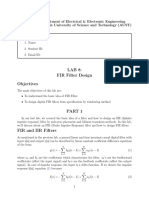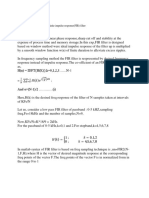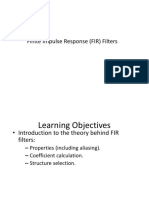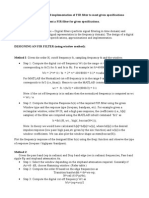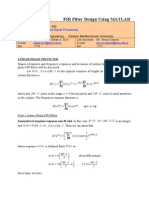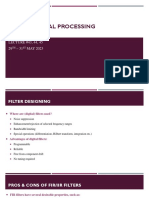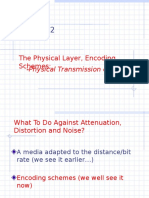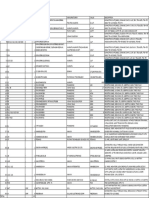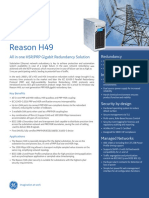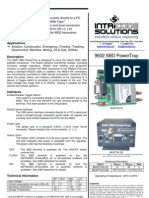0% found this document useful (0 votes)
47 views9 pagesFinite Impulse Response (FIR) Filter Design and Analysis
This document describes the design and analysis of a finite impulse response (FIR) filter. It defines the specifications of an FIR filter including the sampling frequency, cutoff frequencies, number of filter delays, and type of filter. It then calculates the filter coefficients, applies the filter to an input signal, and analyzes the output signal and frequency response to test the filter performance.
Uploaded by
vikreadingCopyright
© © All Rights Reserved
We take content rights seriously. If you suspect this is your content, claim it here.
Available Formats
Download as PDF, TXT or read online on Scribd
0% found this document useful (0 votes)
47 views9 pagesFinite Impulse Response (FIR) Filter Design and Analysis
This document describes the design and analysis of a finite impulse response (FIR) filter. It defines the specifications of an FIR filter including the sampling frequency, cutoff frequencies, number of filter delays, and type of filter. It then calculates the filter coefficients, applies the filter to an input signal, and analyzes the output signal and frequency response to test the filter performance.
Uploaded by
vikreadingCopyright
© © All Rights Reserved
We take content rights seriously. If you suspect this is your content, claim it here.
Available Formats
Download as PDF, TXT or read online on Scribd
/ 9

